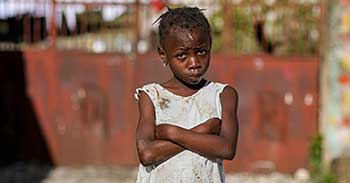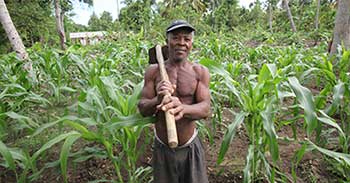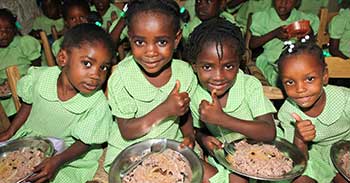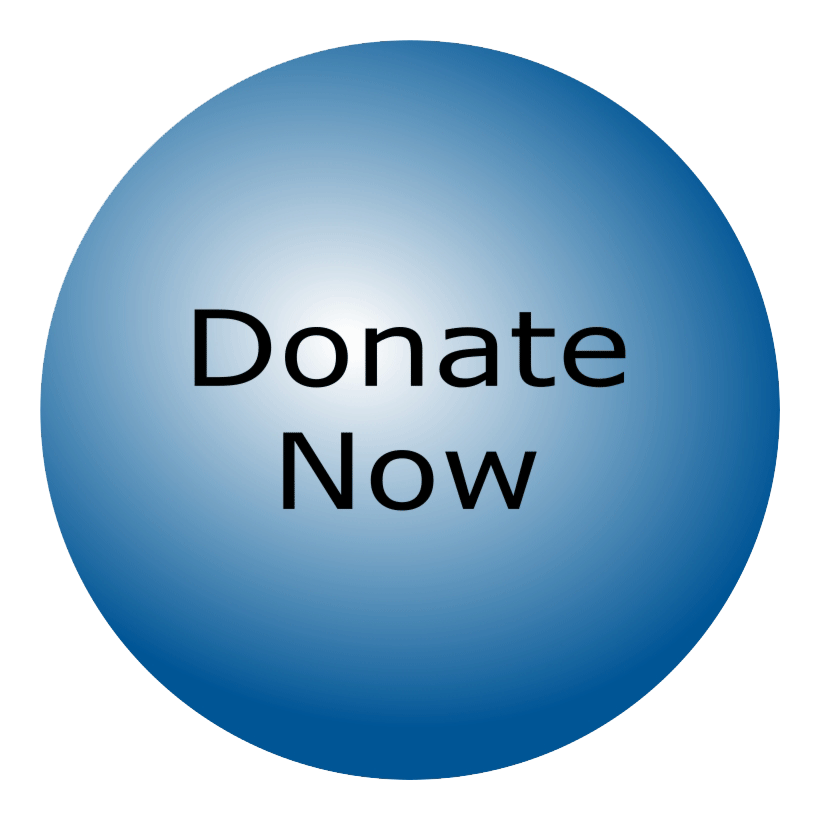Day five in Haiti finds me on a Sunday wanting to clear up some misconceptions I had before I arrived. For instance, I thought:
1. The heat would be oppressive. It's hot here, but not like in Kansas. I hear it has been in single digits this week and there is a winter storm watch for tonight. Here it's been in the 80s and 90s all week. Yesterday's 91 translated into a heat index of 99 because of the humidity. I have always heard people complain that "it's not the heat, it's the humidity."
In reality, it's the heat. High temps, dry air and high winds are just plain uncomfortable in Kansas. Give me 100 degrees including humidity, a cold Prestige beer and good conversation under a mango tree in Haiti and I'm just fine. (It's OK to hate me just a little.)
And besides, the humidity has done wonders for my dry winter skin.
2. The mountains are more like foothills. We made a trip into the mountains yesterday and I learned differently. You know when it's hot in Colorado Springs and you go up to Pikes Peak? Getting out of the car at the Baptist Mission at Fermete was similar; I would have liked to have had a jacket. (As an aside, we met the elderly man and his wife whose grandparents founded the mission. Cool stuff.)
Jan said the drive up the mountains reminded her of Europe. "I didn't know you've been to Europe," I said. "I haven't," she replied. It was extremely funny, but maybe you had to be there. (I'll bet you wish you were.)
The mountain was 4,459 feet high and we could see the clouds covering Port-au-Prince. Our guides had hoped we'd see the actual city. Barry did his best to point out places of interest anyway.
3. The insects and mosquitoes would be nearly intolerable. Maybe it's my Kansas experience, but Haitian mosquitoes are nothing. They are small, brown, not too plentiful and I haven't seen one land on me yet. There's no way one could carry off a small child like the ones in Kansas can.
Do you want to know the difference between Kansans and Haitians? Even though we should be mosquito tolerant, we continue to slap at them in an attempt to kill them. Haitians not only don't bother, they don't even seem to notice.
Also of interest is that, although our host Tony's home has completely open rooms and windows, there are no swarms of bugs at the lights at night. The chickens in the yard and the geckos on the walls probably help.
Even though the bugs aren't bad, we still sleep under mosquito nets at night. It kind of makes me feel like a princess. Jan didn't have a net the first night and was plagued by one buzzing in her ear. She tried to keep it out by pulling the bed sheet up, but then she was too hot. (She tells the story much better.)
I do have a series of bug bites on my legs, but they don't itch and I never felt anything bite me. The only thing about them that bothers me is that I can't shave my legs.
4. Haiti is a Third World country with limited 20th century amenities. Obviously, this isn't true since I have full access to the Internet any time I need it. And to my surprise, even people of meager means have cell phones here because they are given away free. They are the kind that you have to buy prepaid cards for, but nobody does. They use them for incoming calls that are free.
I worried a lot about restroom facilities before I got here. My guide and host have timed all of our outings so carefully that I have always had access to a flush toilet.
5. Everything would be dirty. There is, of course, a major problem with sanitation that we see daily. But the people themselves are clean. Even in a crowd there is no smell of body odor. Everywhere you look, especially today because it is the big laundry day, people are washing their clothes by hand and laying them out to dry. Children arrive at school clean with freshly laundered uniforms. That they take such pride in their personal hygiene says a lot about the character of Haitians. With such limited water, it is a real struggle for them.
I have many more random thoughts to share, but I hear a Prestige beer calling me and a mango tree waiting. (P.S. The house boys are really cute. Fortunately for them, I'm married.)




















